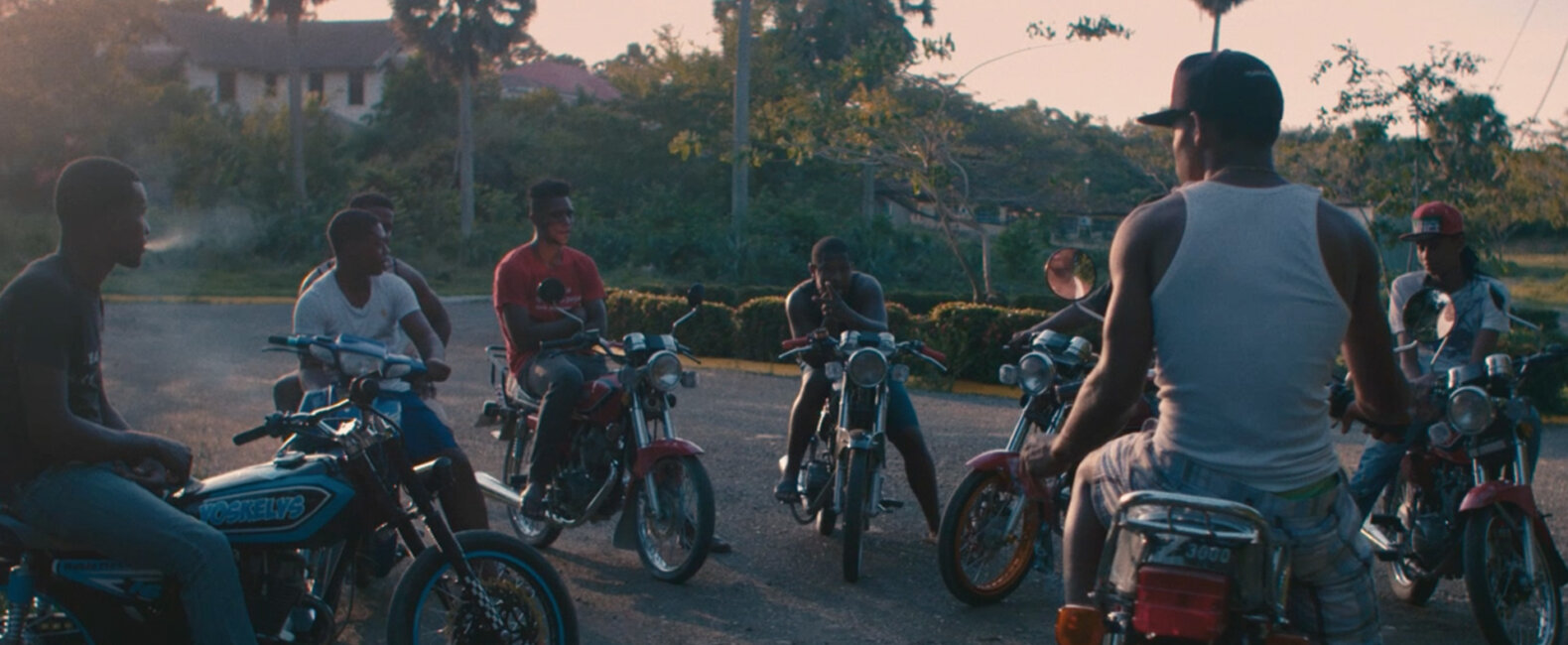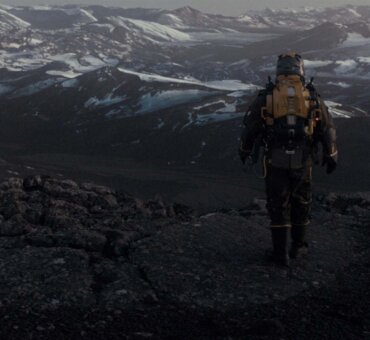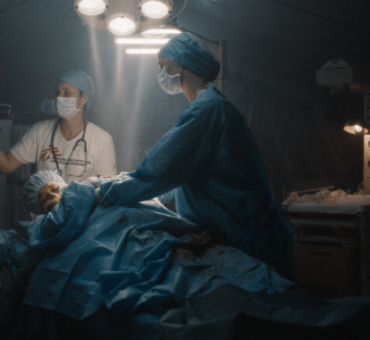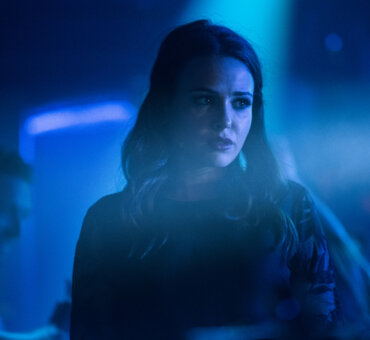There’s no more powerful call to action than the truth, particularly in filmmaking. You don’t need to preach or grandstand, just present a compelling story. “I never want to be heavy-handed and tell people they have to be moved to do something at the end of a film,” director Mark Bone told us. But in Rescate, the documentary short from the Toronto-based filmmaker, he didn’t have to — he let an incredible story speak for itself. Our latest addition to Filmsupply Films focuses on the efforts of Rescate Ambar, a group of volunteer emergency responders who provide the citizens of Puerto Plata — a city on the north coast of the Dominican Republic — with free emergency transit after many of the town’s frequent transit-related accidents.
Bone initially traveled to Puerto Plata after losing his friend in a plane crash off the coast, but ultimately stumbled onto a story that’s as heartbreaking as it is inspiring. It wasn’t long until Bone donned an emergency responder uniform and went about capturing a remarkably visceral inside look at these local heroes who face life-and-death along one of the world’s most dangerous roadways.
Watch Rescate below. Then read our conversation with Mark Bone about the accidents, both horrible and happy, that shaped this impactful short film.
What inspired this piece?
The whole reason I decided to do this project is because my best friend passed away in a plane crash [off the coast of Puerto Plata]. A lot of wreckage was found, but not him or the other victims. So I rushed to the accident site. I had been to the Dominican Republic before; but on this trip specifically, I remember it was overcast. As I drove to the beach, I noticed all of these palm trees, which I usually associated with pleasure, and the dark clouds behind them. It was such a strange feeling.
I’m usually drawn to the unexpected, so when I started working on Rescate, I looked at how Caribbean islands are usually portrayed. I didn’t want to show the island in the normal sunny way. Much of the Dominican Republic’s year is full of rain and dark clouds. So instead of focusing on the magic hour that people are used to seeing, I decided to focus on showing this beautiful island in a darker way.
Is that where you met the Rescate Ambar team?
Yeah. One group of individuals wearing matching T-shirts and snorkels were out there on old Jet Skis and boats and were the hardest working people in the search group. A friend explained they were volunteers who had day jobs, but they’d chosen to forego work to try to find crash survivors. Right in that moment, my documentary sense went off. That night, I started researching them.
There’s a great deal of juxtaposition in this piece. Light and dark, hurrying and slowing down; do you like to play with different extremes?
I do like finding visual metaphors in the work. So things like seeing the bikers wearing flip-flops on this jagged gravel — it really told the story for me. The locals are so daring and confident in what they do, but that’s the problem. Dominicans genuinely feel confident enough to drink and drive, and yet the Dominican Republic is the second deadliest place to drive in the world. But they don’t seem to consider the consequences. That’s juxtaposition in itself.
Did being that close to these life-or-death situations take a toll on you?
I was worried about that going in. I was apprehensive but also curious about how I would react. It didn’t impact me the way I thought it would. The paramedics aren’t emotional — so you return from the accident, and they go right back to watching baseball. I think being with them gave me huge peace. I had my camera; I was doing a job. You’re in the middle of an accident, and you’re thinking, Is my exposure good? Am I at the right angle? I wasn’t taking in the humanity of it. It surprised me how much of a safety net the camera became between the accidents and me. It was only once the adrenaline wore off and I was reviewing the footage in post-production that I was shocked at the gruesome reality of what I was filming.
How did the locals respond to the presence of you and your camera in these high-stakes situations?
I had this one moment where someone got in my face and told me not to film. We never used that scene because she really didn’t want me filming it, and we respected that. But it’s such a part of the culture that before you even reach the hospital, a video of the accident will be up on Facebook. One of the nurses I spoke to was explaining that people love to film accidents, and it’s a part of the Dominican culture. So no one looked at me much. I do think Dominicans almost wanted this footage to be filmed because they’re all aware of the problem; and they recognized that I was trying to expose the problem, not humiliate anyone. So people saw me as a part of the team.
Did you discover anything unexpectedly while you were shooting?
The entire cemetery scene. I knew I wanted to include a scene of Reynaldo walking through a lot of gravestones, but we had no clue he had family buried in that particular graveyard. We were really bummed the day we shot that, because our drone had stopped working. We were making our way down the mountain, and I saw the cemetery. The sun was setting, it was really dark, and I thought it would be cool to get a quick shot of Reynaldo there. He started looking through the graveyard — I thought he was acting because I’d told him to just walk — and all of a sudden, he pointed and said, “My tio.” I saw him choke up. Then he started opening up. It was the first time Reynaldo showed that type of emotion. And here we’d stumbled on that moment completely by accident. You could never manufacture that.
You’ve got an extensive background in photography. What compels you creatively: form or feeling?
For me, it’s definitely feeling. Being a commercial director, I’ve had to come to grips with script writing and that whole structure. It’s a good process, but my background is really based in emotion. The struggle for me is finding a way to mix that in with form, because otherwise you can lose the momentum of the film. As a filmmaker, I’m always introducing more and more form to elevate the feeling and to help that feeling progress.
Do you feel as though your work has a social responsibility?
I want to tell good stories; and at the end of the day, I want my work to have a significant impact. But it’s a learning process. If you live and die by every project and the impact you feel it’s having, you can become very depressed. I feel very grateful that I get to communicate important topics and themes, but I get to do it in a creative way. My dad sent me this quote from Frank Capra that I really like: “No saint, no pope, no general, no sultan has ever had the power that a filmmaker has: the power to talk to hundreds of millions of people for two hours in the dark.” That really reaffirms why I make films. I feel so honored to be able to tell this story. I never want to be heavy-handed and tell people they have to be moved to do something at the end of a film. I want to tell this story and let people choose how they let it impact them.
—
Filmsupply Films is a series of original films created exclusively by our filmmakers. To watch all of the award-winning films and to license the footage, go to filmsupply.com/films.






